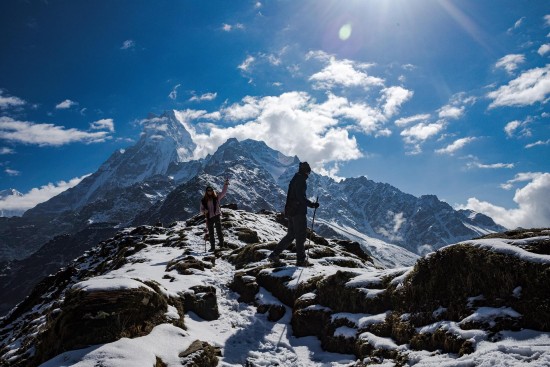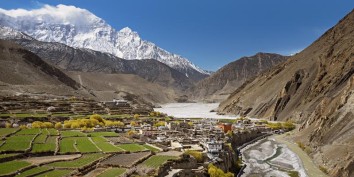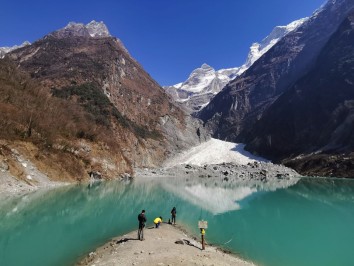Annapurna Seven Passes Trek
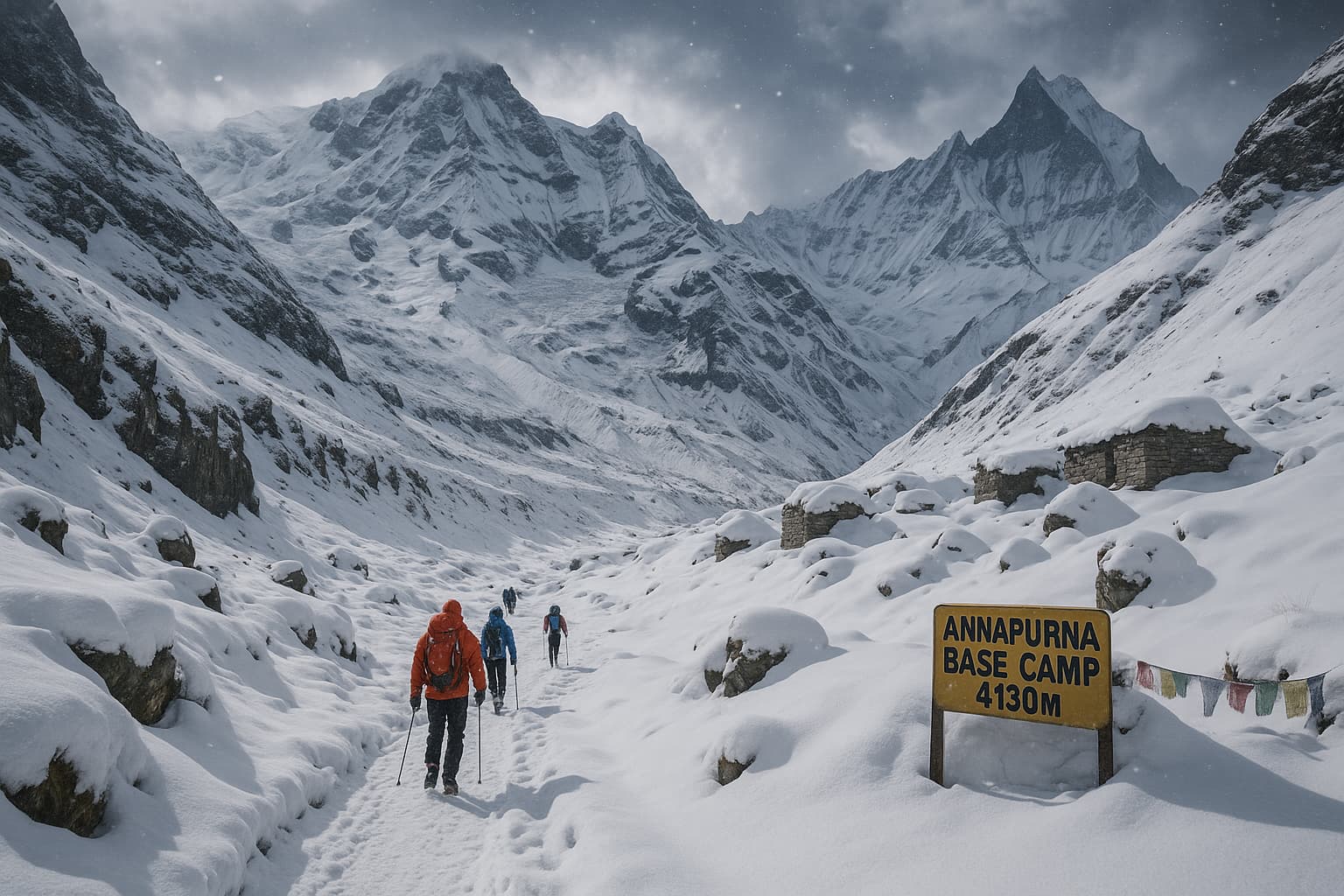
Annapurna Seven Passes Trek Overview
The trek is challenging but worth the effort because of the picturesque views that one can see in the Annapurna region of Nepal. It goes through ancient Tibetan culture and remote villages. The trekking route is about 25 to 30 days and offers the best views of the ranges of Annapurna, Dhaulagiri, Manaslu, and Tilicho. The trek has many highlights like the sacred Tilicho Lake, immersion in Buddhist monasteries, Nar and Phu valleys, and many more. The trek provides the best and untouched views of the Himalayas.
The trek is even more enticing due to crossing seven Himalayan passes, each with a meter summit: Kuchumro Pass (4900m) and Yarcha Pass (4850m). Other passes include Mesaokanto La, Kang La, Nar, and Phu pass. Each pass differs in views and rigorous nature, which rewards the adventurers with breathtaking wilderness. The trek is untamed and wild, making it one of the most remote routes in Nepal. It also inhales and exhales snow fields, narrow ridges, as well as high-altitude deserts. The feeling of crossing every pass mixed with the fine feeling of raw treks creates an experience that few can achieve.
Results of a survey that was conducted suggested the existing route of the Annapurna Circuit Trek is safe for travelers. According to their findings, the route is most suitable for experienced trekkers and mountain and adventure lovers. More so, the survey showed many regard this life-changing check as worthy of its greatest gift, the Himalayas. This particular trek is perfect for passionate adventurers and people looking for authentic experiences, and while trekkers prepare for the next grueling journey or expedition, this is one of the best spots to stretch yourself and your body. Please consider this part of the world if you want a quiet expedition to the depths of the world, which comprises thrilling adventurous discoveries and hidden values.
Highlight of Annapurna Seven Passes Trek
- Crossing seven High Himalayan Passes, which include Nar Pass (5400m), Kang La Pass (5320m), and Mesokanto La Pass (5300m), all offer exceptional excitement and stunning sights.
- Discover Nar &Phu Valleys, which are Ancient Tibetan-influenced cultures with traditional stone villages and Buddhist monasteries that are centuries old.
- Visit the snow-capped peaks of the world’s highest and most beautiful alpine lake, Tilicho Lake.
- Dramatic 360° panoramas of the breathtaking Annapurna, Dhaulagiri, Manaslu & Tilicho Ranges while Trekking from high ridges and passes.
- Embrace the raw and immersive side of the Himalayas by trekking through untouched commercial trekking terrain.
- Explore diverse landscapes; glacial valleys and lush forests transform into high desert plateaus blanketed with arid shrubs and alpine meadows.
- Yak herders and locals' Homestays provide travelers with authentic cultural experiences, along with remote monasteries offering spiritual encounters.
Best Time for Annapurna Seven Passes Trek
The ideal period for the Annapurna Seven Passes Trek is in spring (March to May) or autumn (September to November) when weather patterns are conducive for trekking in the Himalayas. During these months, clear skies and stunning views of the Annapurna, Dhaulagiri, and Manaslu ranges are complemented by well-maintained trails dry enough to safely traverse all seven high passes. The spring season also enhances everywhere with flowering rhododendron forests and verdant alpine meadows. Autumn is famous for its freshness after the monsoon, crisp mountain temperatures, and stunningly colored views.
With strong recommendations to avoid the June to August timeframe of the year due to heavy rainfall, slippery routes, and potential landslides, this trek becomes nearly impossible to navigate. The winter months (December to February) experience heavy snowfall over 4,000m and intense freezing temperatures, rendering vital passes such as Mesokanto La and Nar Pass impassable. Without a doubt, planning the Annapurna Seven Passes Trek in late spring or early autumn acts as a surefire strategy for experiencing safe and breathtaking scenery while navigating treks across some of the highest altitudes Nepal has to offer.
Seven Passes of Annapurna Seven Passes Trek
The Annapurna Seven Passes Trek is one of Nepal’s most challenging and remote trekking routes, offering unparalleled adventure for experienced hikers. As the name suggests, trekkers cross seven major Himalayan passes, each unique in terrain, altitude, and scenery. These high passes connect wild alpine valleys, hidden villages, and rugged landscapes in the eastern and northern flanks of the Annapurna region.
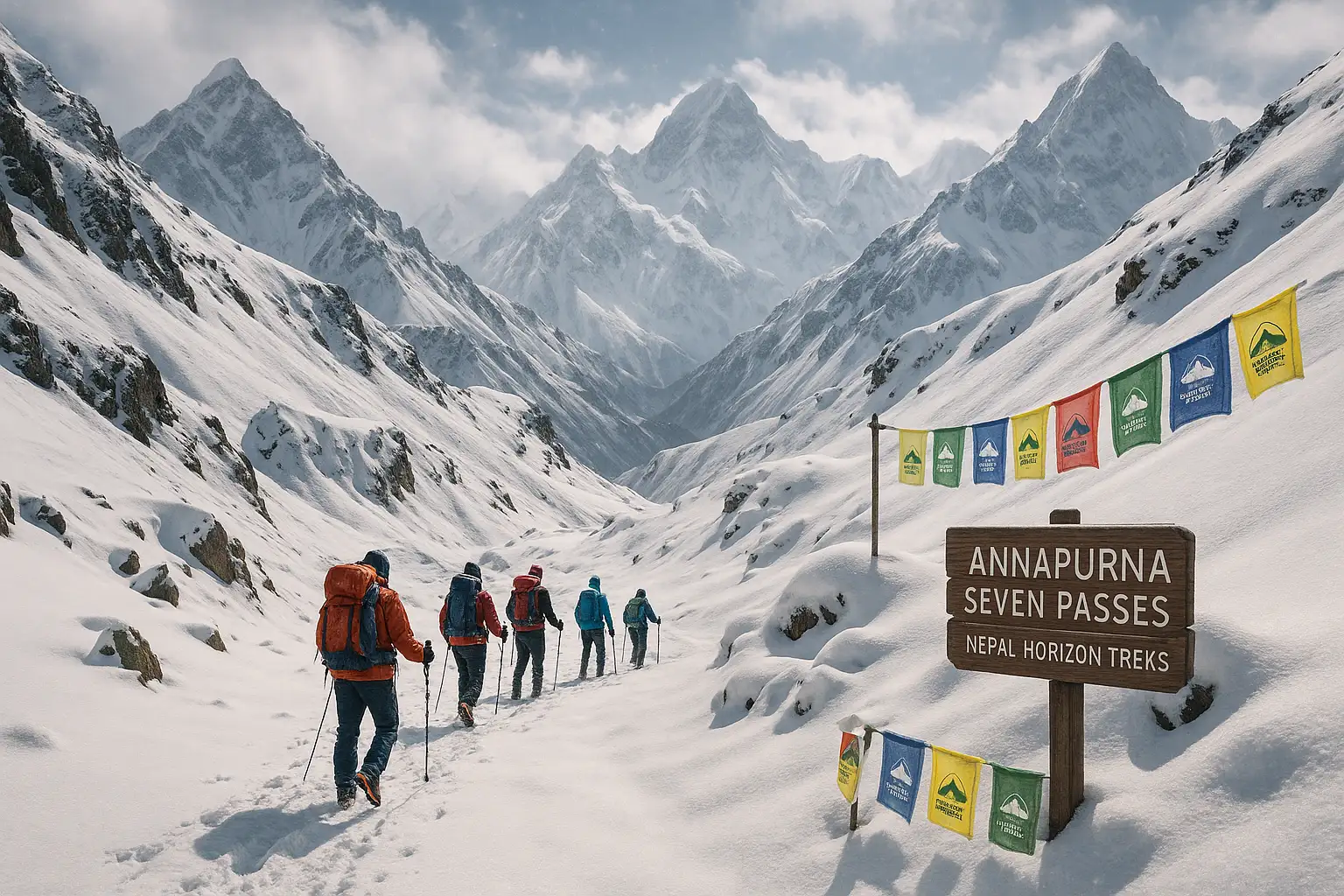 Here’s a closer look at the seven spectacular passes that define this epic journey:
Here’s a closer look at the seven spectacular passes that define this epic journey:
Namun La Pass (5,560m)
Namun La Pass is considered one of the most difficult passes along the trek, with remarkable vistas of Lamjung Himal and Annapurna II. It lies on the eastern side of the Annapurna region, connecting it to the central part of Manang. The elevation relief is quite vertical, lacking cover, and remains snowbound most days of the year, requiring attuned training and savvy altitudinal acclimatization.
Timang Pass (4,600m)
Timang Pass, part of Nar Phu, lies between Kori and Nar Phu. This lesser-known valley is serene and picturesque, along with being a wild and stunning route offering breathtaking views of the Himalayas. The required route is pretty untouched and isolated, hence adventurers are free to fully explore the untamed alpine domain.
Kori Pass (4,500m)
Kori Pass falls between Sikles and the upper Nasa Valley. It is serene and grassy, and has tranquil highland routes. In addition, there is lush greenery, yak herds as well as wildflowers blooming during summer. This provides the region with peaceful solitude while providing stunning vistas of Lamjung Himal and Annapurna II.
Meta Pass (4,650m)
Along with ranking as one of the most ethnically unimpaired areas of Nepal, this pass allows you to venture into the mystical Nar Phu Valley. There is an ancient Tibetan Buddhist civilization that comprises stone stupas, prayer flags, and cliffs with passes that you enter in order to cross Meta Pass.
Phu Pass (5,050m)
Phu Pass connects Meta to Phu Gaon, a historical village located in the lofty heights of the Himalayas. This pass reveals views of the Himlung Himal range and exposes trekkers to life in one of Nepal’s most remote and isolated settlements.
Nar Pass (5,320m)
Crossing Nar Pass takes you from Phu to Nar village, which takes you through high-altitude plateaus and narrow gorges. The trail is adorned with Tibetan Buddhist chortens, stone walls, and herds of yak, bestowing the whole region with a mystical ambiance. The captivating panoramic view also features Kanguru Himal as well as the north face of Pisang Peak.
Kang La Pass (5,320m)
Kang La Pass Interconnecting the Nar Valley and the famous Annapurna Circuit trail lies one of the last and most remarkable passes of this trek. From the top, trekkers are spoiled with jaw-dropping views of Annapurna II, Gangapurna, Tilicho Peak, and many other towering snow-capped mountains.
Why Choose Nepal Horizon Treks for Annapurna Seven Passes Trek
- Nepal Horizon Treks is a trusted trekking company in Nepal specializing in off-the-beaten-path adventures like the Annapurna Seven Passes Trek.
- Our government-licensed local guides have years of experience leading high-altitude treks in the Annapurna region, ensuring expert navigation and safety.
- We provide fully customizable Annapurna Seven Passes Trek itineraries with proper acclimatization to reduce the risk of altitude sickness.
- For remote areas with no teahouses, we offer high-quality camping gear, experienced porters, and full logistical support to keep you safe and comfortable.
- Nepal Horizon Treks handles all trekking permits, including ACAP, TIMS, and Nar-Phu Restricted Area Permits, making your trip hassle-free.
- We offer transparent pricing for the Annapurna Seven Passes Trek with no hidden charges and excellent value for money.
- Your safety is our top priority, with daily health monitoring, emergency backup plans, and 24/7 support throughout the trek.
- As an eco-conscious trekking company in Nepal, we follow sustainable tourism practices and support local communities in the Himalayan region.
- Our excellent reviews and client testimonials reflect our dedication to delivering unforgettable trekking experiences in Nepal.
How to prepare for the Annapurna Seven Passes Trek
Physical Preparation: Train Like a Trekker
This is not your typical teahouse trek. You’ll be trekking for 18–24 days, crossing multiple passes above 5,000 meters. That means stamina, strength, and endurance are essential.
- Cardio Training: Jog, hike, swim, or cycle at least 4–5 times per week to boost your lung capacity and stamina.
- Strength Workouts: Focus on leg and core muscles. Incorporate squats, lunges, step-ups, and deadlifts.
- Backpack Hikes: Do regular hikes with a 10–12 kg backpack to simulate real trekking days.
- Stair Climbing: Mimics steep Himalayan ascents — add weight for extra challenge.
- Flexibility and Mobility: Yoga and stretching prevent injuries and help muscle recovery.
Altitude Acclimatization: Prepare for the Thin Air
You’ll be spending days above 4,000 meters, and crossing passes above 5,500 meters like Namun La and Kang La. That means altitude sickness is a real risk if you're not careful. Here’s how to prepare:
- Understand AMS: Learn to recognize symptoms of Acute Mountain Sickness and how to respond.
- Plan Acclimatization Days: Your itinerary should include rest days and gradual altitude gains.
- Hydrate & Breathe: Drink 3–4 liters of water daily and practice slow, deep breathing at altitude.
- Trek High, Sleep Low: Helps your body adapt better to elevation changes.
- Practice Hikes: If possible, do a high-altitude hike like Langtang Valley or Mardi Himal before this trek.
Packing Smart: Essential Gear for the Seven Passes
You’ll be trekking through remote terrain, often away from any villages or shops. That means having the right gear is critical, especially for cold nights and technical trails.
Your gear checklist should include:
- Backpack (50–65L) + Daypack (20–25L)
- 4-season sleeping bag (rated to -15°C or colder)
- Waterproof boots (broken-in and sturdy)
- Down jacket, thermal layers, fleece
- Waterproof shell jacket & pants
- Trekking poles (a must for descents)
- Headlamp, gloves, hat, buff
- UV sunglasses & sunscreen
- Water filters or purification tablets
- Basic first-aid kit + altitude medicine (Diamox)
- Snacks, dry fruits, energy bars
- Camping gear, if you’re trekking unsupported
Permits You’ll Need
Because this trek passes through both conservation zones and restricted regions, you’ll need multiple permits:
- ACAP (Annapurna Conservation Area Permit)
- TIMS Card
- Nar Phu Restricted Area Permit
- You can arrange all of these through Nepal Horizon Treks or at tourism offices in Kathmandu or Pokhara. Keep passport-sized photos and a copy of your passport handy.
Guide & Porter: A Must for This Remote Route
The Seven Passes trek is extremely remote and less frequented, and many trails are not well-marked. For safety and navigation, hiring a licensed guide is highly recommended.
A porter can carry your heavier gear, allowing you to trek more comfortably and focus on the experience. Local trekking companies (like us!) can provide experienced, trained staff who know the terrain well.
Food & Hydration Tips
Some parts of this trek will have limited access to teahouses or food supplies, especially between high passes.
- Carry snacks and energy bars to stay fueled throughout the day.
- Purify all drinking water using tablets, filters, or UV sterilizers.
- In camping zones, you’ll need to carry basic cooking equipment or rely on guides/porters who can cook.
Mental Preparation: The Hidden Challenge
- Trekking for nearly 3 weeks in wild, isolated terrain is not just a physical challenge — it’s a mental one too. Be prepared for:
- Long, tough days with no network or contact
- Camping in extreme cold and changing weather
- Occasional uncertainty and discomfort
- Moments of awe, humility, and deep solitude
- Stay flexible, embrace the challenge, and trust your team. The rewards — views of untouched mountains, rare cultural experiences, and personal transformation — are worth every step.
Map Overview of Annapurna Seven Passes Trek
|
Route |
Elevation (m) |
Key Highlights / Passes |
|
Kathmandu → Sikles (Drive) |
2,000 |
Gurung village, scenic drive via Pokhara |
|
Sikles → Tasa |
2,750 |
Forest trail, peaceful campsite |
|
Tasa → Kori |
3,800 |
Yak pastures, Lamjung Himal view |
|
Acclimatization at Kori |
3,800 |
Ridge hikes, rest, and alpine scenery |
|
Kori → Thulek |
4,200 |
Remote valley, glacial terrain |
|
Thulek → Nasa via Namun La |
5,560 / 4,200 |
Namun La Pass, panoramic Himalayan views |
|
Nasa → Timang Valley |
4,600 |
Wilderness ridge walk, raw landscapes |
|
Timang → Meta via Meta Pass |
4,650 |
Meta Pass, entry to Nar Phu Valley |
|
Meta → Phu via Phu Pass |
5,050 / 4,200 |
Phu Pass, Himlung Himal, ancient village |
|
Acclimatization in Phu |
4,200 |
Tashi Monastery, cultural immersion |
|
Phu → Nar via Nar Pass |
5,320 / 4,150 |
Nar Pass, Tibetan culture, views of Kang Guru |
|
Rest in Nar |
4,150 |
Monasteries, local interaction |
|
Nar → Ngawal via Kang La |
5,320 / 3,660 |
Kang La Pass, views of Annapurna & Tilicho |
|
Ngawal → Manang |
3,540 |
Mani walls, acclimatization village |
|
Manang → Khangsar |
3,734 |
Offbeat trail, Tilicho views |
|
Khangsar → Tilicho Base Camp |
4,150 |
Narrow trails, glacier valley |
|
Tilicho Lake → Khangsar (Round trip) |
4,919 / 3,734 |
Tilicho Lake, the highest glacial lake |
|
Khangsar → Yak Kharka |
4,050 |
Pastures, Chulu views, return to the circuit trail |
|
Yak Kharka → Chame |
2,710 |
Descent, forest walk, river crossings |
|
Chame → Kathmandu (Drive via Besisahar) |
1,400 |
Jeep drive, riverside scenery |
|
Final Departure |
— |
Airport transfer, end of trek |
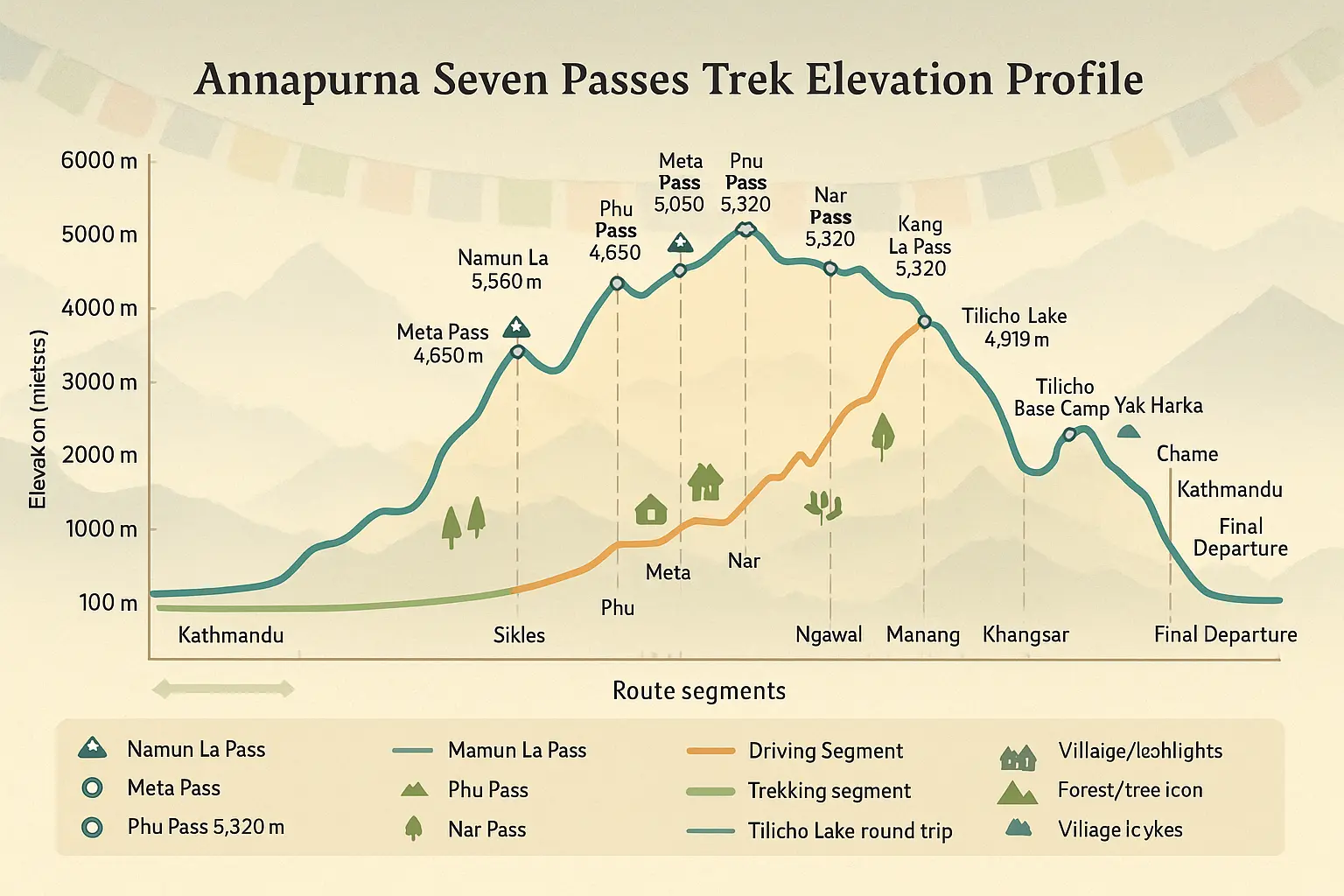
The Annapurna Seven Passes Trek is an exhilarating 21-day high-altitude trekking adventure in Nepal’s Annapurna region, crossing seven challenging Himalayan passes such as Namun La, Meta Pass, Phu Pass, Nar Pass, and Kang La. Starting from the traditional Gurung village of Sikles, this trek takes you through diverse landscapes including lush forests, alpine meadows, glacial valleys, and remote Tibetan-influenced villages like Phu and Nar. Trekkers will explore sacred sites like Tilicho Lake, one of the highest glacial lakes in the world while experiencing authentic Himalayan culture and breathtaking panoramic mountain views. This off-the-beaten-path Annapurna trekking route offers unmatched solitude, rich cultural immersion, and spectacular scenery, making it ideal for seasoned trekkers seeking a unique and challenging Nepal trekking experience.
Annapurna Seven Passes Trek 21 Days Itinerary Overview
|
Day |
Route & Activity |
Highlights / Details |
Overnight |
|
Day 1 |
Drive from Kathmandu to Sikles (2,000m) |
Scenic drive via Pokhara, traditional Gurung village |
Lodge in Sikles |
|
Day 2 |
Trek to Tasa (2,750m) |
Forested trails, terraced fields, peaceful campsites |
Camping |
|
Day 3 |
Trek to Kori (3,800m) |
Alpine meadows, Lamjung Himal views, yak pastures |
Camping |
|
Day 4 |
Acclimatization at Kori |
Explore Kori Ridge, panoramic views, rest day |
Camping |
|
Day 5 |
Trek to Thulek (4,200m) |
Remote trails, wilderness trekking |
Camping |
|
Day 6 |
Cross Namun La Pass (5,560m) – Trek to Nasa Valley (4,200m) |
One of the highest passes, stunning Annapurna views |
Camping |
|
Day 7 |
Trek to Timang Valley (4,600m) |
Isolated ridgelines, wild Himalayan terrain |
Camping |
|
Day 8 |
Trek to Meta via Meta Pass (4,650m) |
Enter Nar Phu Valley, dramatic landscapes |
Lodge in Meta |
|
Day 9 |
Trek to Phu Village (4,200m) via Phu Pass (5,050m) |
Cliffside trails, Himlung Himal views, stone village |
Lodge in Phu |
|
Day 10 |
Acclimatization and exploration in Phu |
Visit Tashi Monastery, explore ancient village life |
Lodge in Phu |
|
Day 11 |
Trek to Nar Village (4,150m) via Nar Pass (5,320m) |
Remote canyon, Buddhist landmarks, Tibetan culture |
Lodge in Nar |
|
Day 12 |
Rest and Cultural Day in Nar |
Explore gompas, meet locals, recharge energy |
Lodge in Nar |
|
Day 13 |
Cross Kang La Pass (5,320m) – Trek to Ngawal (3,660m) |
Epic Annapurna views, long descent to the Manang region |
Lodge in Ngawal |
|
Day 14 |
Trek to Manang (3,540m) |
Easy hike, join Annapurna Circuit, comforts return |
Lodge in Manang |
|
Day 15 |
Trek to Khangsar (3,734m) |
The off-beat route toward the Tilicho region |
Lodge in Khangsar |
|
Day 16 |
Trek to Tilicho Base Camp (4,150m) |
Barren Valley, approaches the world’s highest lake |
Lodge in Base Camp |
|
Day 17 |
Visit Tilicho Lake (4,919m) – Return to Khangsar |
Stunning high-altitude lake, challenging terrain |
Lodge in Khangsar |
|
Day 18 |
Trek to Yak Kharka (4,050m) |
Gradual climb, great views of Chulu peaks |
Lodge in Yak Kharka |
|
Day 19 |
Trek to Chame (2,710m) |
Descend through the alpine and pine forest |
Lodge in Chame |
|
Day 20 |
Drive from Chame to Kathmandu |
Scenic jeep ride via Besisahar and Prithvi Highway |
Hotel in Kathmandu |
|
Day 21 |
Final Departure |
Transfer to Tribhuvan International Airport |
– |
Annapurna Seven Passes Trek Itinerary
Your journey begins with an early morning drive from Kathmandu through the scenic countryside of Nepal, passing rolling hills, terraced farms, and riverside villages. After about 7–8 hours of travel, you’ll reach Sikles, a beautiful and traditional Gurung village nestled beneath Lamjung Himal. This is one of the largest Gurung settlements in the Annapurna region and offers stunning mountain views. You'll notice the peaceful lifestyle, stone houses, and prayer flags fluttering in the breeze. Spend the evening soaking in local hospitality and preparing for the adventure ahead.
 MEALS
MEALS
 Breakfast, dinner, Lunch
Breakfast, dinner, Lunch
The trail gradually climbs out of Sikles through lush rhododendron and oak forests. You'll pass traditional farmlands, small water streams, and occasional yak grazing pastures. The path becomes quieter and more serene as you move deeper into nature, away from village life. Tasa is a beautiful open campsite surrounded by ridges and forests, making it ideal for an immersive Himalayan camping experience. This day helps you transition from lowland villages to higher alpine terrain.
 MEALS
MEALS
 Breakfast, dinner, Lunch
Breakfast, dinner, Lunch
Today’s trek offers dramatic elevation gain as you move above the tree line. The trail becomes more rugged, and the scenery transforms into open meadows, glacial streams, and panoramic Himalayan views. The approach to Kori is truly breathtaking — you’ll trek through yak pastures and alpine tundra, all under the watchful gaze of Lamjung Himal and Annapurna II. Kori is a vast highland plateau and serves as a base for tomorrow’s acclimatization. The remoteness and beauty here are surreal.
 MEALS
MEALS
 Breakfast, dinner, Lunch
Breakfast, dinner, Lunch
An important rest and acclimatization day to help your body adapt to the high altitude. You can take short hikes to Kori Ridge or nearby viewpoints for jaw-dropping views of the Annapurna range. This area is perfect for peaceful exploration — look for grazing yaks, colorful alpine flowers, and the occasional Himalayan monal (Nepal’s national bird). Spending the night here helps reduce the risk of altitude sickness before you tackle the higher passes in the coming days.
 MEALS
MEALS
 Breakfast, dinner, Lunch
Breakfast, dinner, Lunch
Leaving Kori, you continue on a more isolated trail toward the remote Thulek Valley. The terrain becomes steeper and more challenging, passing through scree slopes and rock-strewn paths. The silence of the high Himalayas becomes more apparent here, as you’re now far from any permanent settlements. Thulek offers raw alpine beauty, towering cliffs, glacier-fed streams, and chilling winds. Camping here gives a true sense of adventure in one of the most untouched corners of the Annapurna region.
 MEALS
MEALS
 Breakfast, dinner, Lunch
Breakfast, dinner, Lunch
This is one of the toughest and most rewarding days of the trek. You’ll start early for a long, steep ascent to Namun La Pass, the highest point of the entire trek. The climb is demanding but offers spectacular views of Annapurna II, Lamjung Himal, Manaslu, and beyond. Prayer flags flutter at the top of the pass, marking your achievement. After enjoying the view, you'll descend into the remote and windswept Nasa Valley, where you’ll set up camp. This is a day of true Himalayan wilderness.
 MEALS
MEALS
 Breakfast, dinner, Lunch
Breakfast, dinner, Lunch
Today’s trail takes you through a quiet alpine corridor that feels almost otherworldly. You’ll walk across glacial plains, rocky terrain, and narrow ridgelines as you move from Nasa to Timang Valley. This region sees almost no trekkers, making it one of the most isolated sections of the entire route. Wildlife sightings are possible — including blue sheep or even snow leopard tracks. The Timang Valley opens up toward the Nar Phu region and serves as a transitional zone between wilderness and culture.
 MEALS
MEALS
 Breakfast, dinner, Lunch
Breakfast, dinner, Lunch
You’ll start your day with a climb to Meta Pass, a lesser-known high-altitude crossing that opens up the gateway to the Nar Phu Valley. The landscape changes dramatically — from alpine greens to arid cliffs and sandstone towers. As you enter Meta, the Tibetan influence becomes visible in the architecture and mani walls. Meta is a windswept, stone-built settlement and offers your first real taste of the mysticism of Nar Phu. You’ll stay in a simple lodge tonight.
 MEALS
MEALS
 Breakfast, dinner, Lunch
Breakfast, dinner, Lunch
A thrilling day that takes you through ancient trade routes, steep canyons, and layered rock formations. You'll cross the Phu Pass and descend into one of Nepal’s most mysterious and isolated villages — Phu Gaon. Perched above the valley, Phu is an ancient stone village with a timeless vibe. Towering cliffs, chortens, and the snow-covered Himlung Himal dominate the landscape. You’ll stay in a teahouse, enjoying the rare cultural richness of this remote region.
 MEALS
MEALS
 Breakfast, dinner, Lunch
Breakfast, dinner, Lunch
Spend the day resting and exploring the fascinating cultural landmarks of Phu. Visit Tashi Lhakhang Monastery, considered sacred and centuries old. Observe local life as it has been lived for generations — prayer rituals, yak herding, and traditional crafts. This rest day is also essential for altitude adaptation before the next high pass. The atmosphere in Phu is silent, spiritual, and truly unique.
 MEALS
MEALS
 Breakfast, dinner, Lunch
Breakfast, dinner, Lunch
Today’s route takes you over the Nar Pass, a rugged crossing that connects the two culturally rich villages of the region. The trail is demanding but offers incredible views of Kang Guru and Pisang Peak. After crossing the pass, you’ll descend into Nar Village, a beautiful settlement of stone houses and colorful prayer flags. The people here live a semi-nomadic lifestyle, and the village is filled with monasteries and local charm.
 MEALS
MEALS
 Breakfast, dinner, Lunch
Breakfast, dinner, Lunch
Enjoy a slower pace today as you explore Nar. Interact with locals, visit ancient gompas, and witness everyday Himalayan life untouched by modernity. This is a great time to reflect on the journey so far, journal, or simply enjoy the silence. Resting here also prepares you for the final major pass of the trek — Kang La.
 MEALS
MEALS
 Breakfast, dinner, Lunch
Breakfast, dinner, Lunch
A challenging but unforgettable day as you ascend to Kang La Pass, one of the most beautiful viewpoints of the trek. From the top, you'll see a stunning panorama of the Annapurna range, Tilicho Peak, and Chulu East. The descent is steep and long but rewarding, as it brings you down into the greener Manang Valley. You’ll reach Ngawal, a large village on the Annapurna Circuit with better amenities and warm lodges.
 MEALS
MEALS
 Breakfast, dinner, Lunch
Breakfast, dinner, Lunch
After crossing the breathtaking Kang La Pass, the trail eases as you descend into the green valley of the Upper Manang region. This portion of the Annapurna Circuit is dotted with Tibetan-style villages, centuries-old mani walls, and pine forests. The relatively short and gradual trek offers time to slow down and appreciate the rich cultural and natural diversity. You’ll arrive in Manang, a lively village renowned for its high-altitude acclimatization culture, bakeries, and alpine charm. Manang is a great place to enjoy a proper meal, interact with fellow trekkers, and recharge in a well-equipped teahouse. This day provides a relaxing contrast to the challenging high passes of the previous days.
 MEALS
MEALS
 Breakfast, dinner, Lunch
Breakfast, dinner, Lunch
Leaving the well-trodden trail of the Annapurna Circuit, today’s route heads west toward the Tilicho Valley, an offbeat section that few trekkers explore. The path gradually climbs along the Marsyangdi River, leading to Khangsar, a small, ancient village surrounded by the towering peaks of Tilicho and Gangapurna. The village still retains its traditional Buddhist culture, with prayer flags and chortens adorning the trail. The solitude here is refreshing after the bustling atmosphere of Manang. Khangsar is also your stepping stone to the world-famous Tilicho Lake, so it’s a vital stop for rest and preparation. The landscape becomes more arid and barren, reflecting the rain-shadow terrain typical of the upper Manang region.
 MEALS
MEALS
 Breakfast, dinner, Lunch
Breakfast, dinner, Lunch
Today you’ll traverse dramatic and rugged terrain toward Tilicho Base Camp, a staging point for one of the highest glacial lakes in the world. The trail becomes narrow, with sections cutting across landslide-prone slopes, sheer cliffs, and exposed rock faces. The scenery is raw and powerful — think glacial valleys, moraines, and snow-dusted ridgelines. As you reach base camp, the towering Tilicho Peak (7,134m) dominates the skyline. Despite its harsh environment, Tilicho Base Camp offers basic but cozy lodges that are essential for acclimatization and rest. You’ll need to hydrate well and prepare for the strenuous ascent to the lake the following morning. This is one of the most dramatic and unforgettable parts of the journey.
 MEALS
MEALS
 Breakfast, dinner, Lunch
Breakfast, dinner, Lunch
This is one of the highlight days of the Annapurna Seven Passes Trek. You’ll begin your hike early in the morning, ascending steeply toward Tilicho Lake, the highest-altitude glacial lake in Nepal. The climb is physically demanding due to the altitude and steep inclines, but every step is rewarded with jaw-dropping Himalayan scenery. As you reach the lake, its surreal turquoise waters reflect the snow-clad peaks of Tilicho, Nilgiri, and Khangsar Kang, offering a spiritual and photographic moment like no other. You’ll spend time at the lake, then descend carefully back to Khangsar. This round trip is not only physically challenging but spiritually fulfilling — a must-see destination for true Himalayan explorers.
 MEALS
MEALS
 Breakfast, dinner, Lunch
Breakfast, dinner, Lunch
Today you return to the main Annapurna Circuit trail and make your way to Yak Kharka, a scenic high-altitude grazing area that sits on a gentle slope with outstanding views of the Chulu Peaks and Gangapurna Himal. The trail passes through alpine scrubland and small stone shelters used by yak herders. It’s a relatively easier walking day compared to the previous ones, giving your body a chance to recover from Tilicho Lake while still maintaining altitude. Yak Kharka is peaceful and windswept, and it’s a perfect place to rest before your final trekking days. Keep your camera ready, as the morning and evening light here is absolutely golden.
 MEALS
MEALS
 Breakfast, dinner, Lunch
Breakfast, dinner, Lunch
Today marks the longest descent of the trek as you head downhill through a changing ecosystem — from high alpine terrain into lush pine forests and river valleys. The descent follows the Marsyangdi River, crossing suspension bridges and passing waterfalls along the way. You’ll eventually reach Chame, the district headquarters of Manang, which feels almost like a return to modernity. With reliable electricity, internet, and better food options, Chame provides one last comfortable night on the trail. The sense of completion and satisfaction begins to sink in, knowing you’ve completed one of the most remote and wild trekking routes in Nepal.
 MEALS
MEALS
 Breakfast, dinner, Lunch
Breakfast, dinner, Lunch
Your trekking journey concludes with a long but scenic jeep ride back to Kathmandu, passing through charming villages, waterfalls, steep river gorges, and cultivated terraces. The drive retraces your route through Besisahar and then continues along the Prithvi Highway toward the capital. While bumpy at times, the route offers beautiful views of the mid-hills and the chance to reflect on the extraordinary adventure you’ve completed. Upon arrival in Kathmandu, you'll be transferred to your hotel. A hot shower, a real bed, and a celebratory dinner in the city are well-deserved after weeks in the wild Himalayas.
 MEALS
MEALS
 Breakfast, dinner, Lunch
Breakfast, dinner, Lunch
Depending on your flight time, our team will provide a private airport transfer from your hotel to Tribhuvan International Airport. As you say goodbye to Nepal, you’ll carry memories of snow-covered passes, ancient Himalayan villages, glacial lakes, and wilderness solitude. This trek is more than a journey — it’s a rare Himalayan odyssey that only few dare to complete. Nepal Horizon Treks thank you for choosing us and welcomes you back for future Himalayan adventures.
 MEALS
MEALS
 Breakfast, dinner, Lunch
Breakfast, dinner, Lunch
Cost Includes/Excludes
What are Included In My Package ?
- All required permits (ACAP, TIMS, restricted areas)
- Private transport to and from the trek starting point
- Licensed, experienced English-speaking guide
- One porter for every two trekkers (max 20kg)
- Teahouse or camping accommodation during the trek
- All meals during the trek (breakfast, lunch, dinner, with tea/coffee)
- First aid kit, pulse oximeter & emergency oxygen
- Sleeping bag, duffel bag, and trekking map
- Welcome & farewell dinner in Kathmandu
- Certificate & Nepal Horizon Treks t-shirt
- All government taxes and service charges
What are excluded from the package ?
- International airfare
- Nepal visa fees
- Hotels and meals in Kathmandu & Pokhara
- Travel insurance (mandatory)
- Personal expenses (Wi-Fi, snacks, hot shower, etc.)
- Trekking gear rental or purchase
- Tips for the guide and the porter
- Medical or evacuation costs (if uninsured)
FAQs
The Annapurna Seven Passes Trek is considered a challenging high-altitude trek suitable for experienced trekkers. It involves crossing seven Himalayan passes above 5,000 meters, requiring good physical fitness, stamina, and prior trekking experience in Nepal’s mountainous terrain.
The best time for the Annapurna Seven Passes Trek is during the pre-monsoon (March to May) and post-monsoon (late September to November) seasons. These months offer clear skies, stable weather, and spectacular mountain views, ideal for trekking in the Annapurna region.
The full Annapurna Seven Passes Trek typically takes around 20 to 22 days, depending on acclimatization and rest days. This duration allows trekkers to safely cross all seven passes and explore remote villages and highlights like Tilicho Lake.
Hiring a licensed guide and porter is highly recommended for the Annapurna Seven Passes Trek due to its remote nature and challenging terrain. A guide enhances safety, navigation, cultural insight, and overall trekking experience in this off-the-beaten-path route.
Trekkers must obtain the Annapurna Conservation Area Permit (ACAP) and a Trekker’s Information Management System (TIMS) card to undertake the Annapurna Seven Passes Trek. These permits help protect the environment and support sustainable tourism in Nepal’s Annapurna region.
Traveller Useful Information
Embarking on the Annapurna Seven Passes trek is a life-changing adventure, and choosing Nepal Horizon Treks as your trusted partner ensures an unforgettable, safe, and authentic experience. With our expert guides, personalized service, and deep knowledge of the Annapurna region, we take pride in delivering seamless trekking journeys that immerse you in the breathtaking Himalayan landscapes and rich local culture. Whether you are a seasoned trekker or a passionate explorer, Nepal Horizon Treks is dedicated to making your Annapurna Seven Passes trek inspiring, rewarding, and hassle-free. Book your trek with us today and discover the true spirit of Nepal’s mountains with the best trekking company by your side!

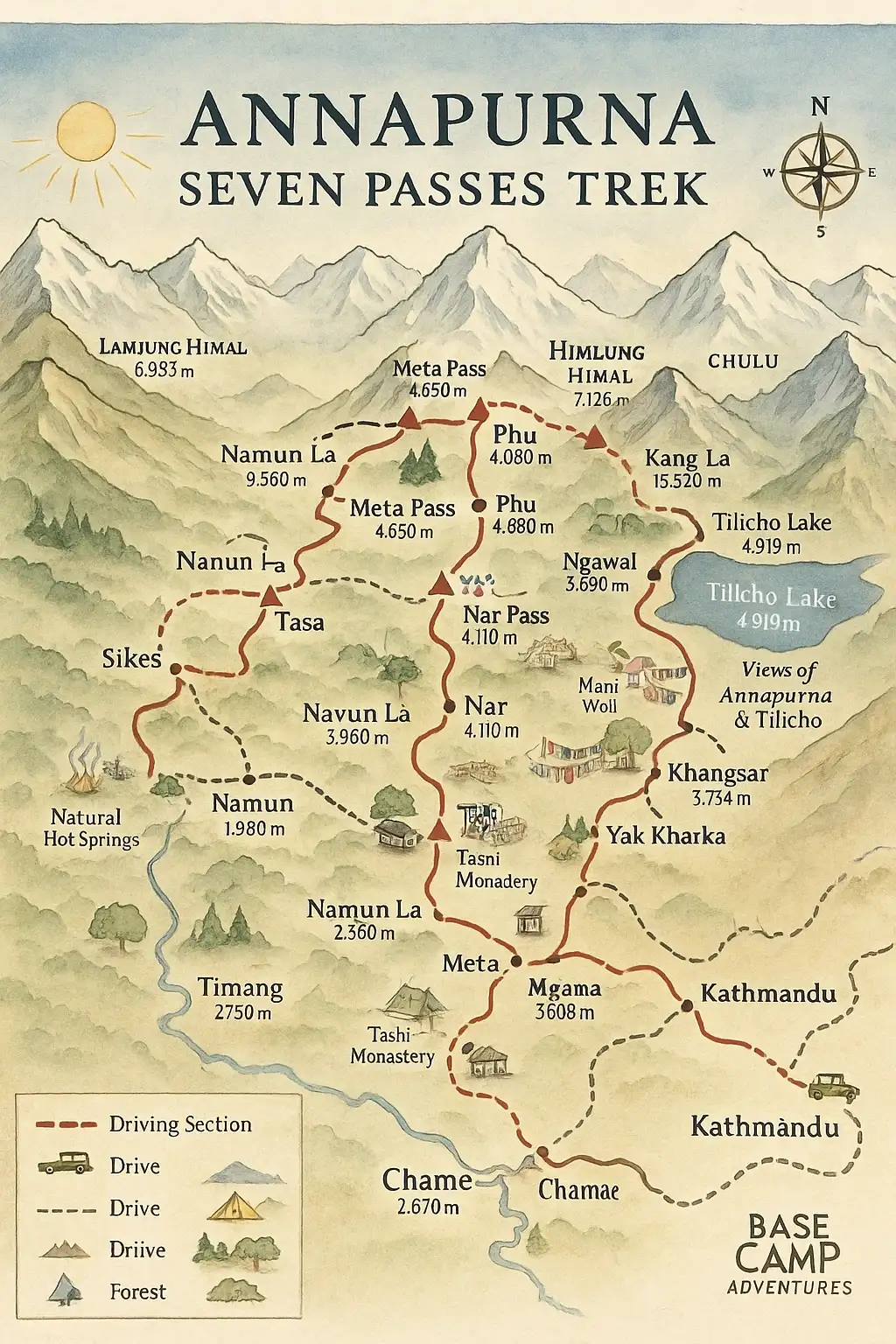



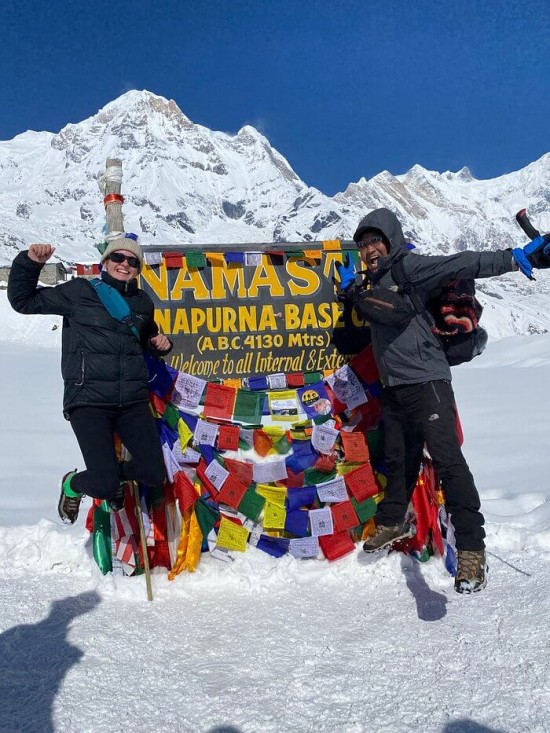


.jpg)
